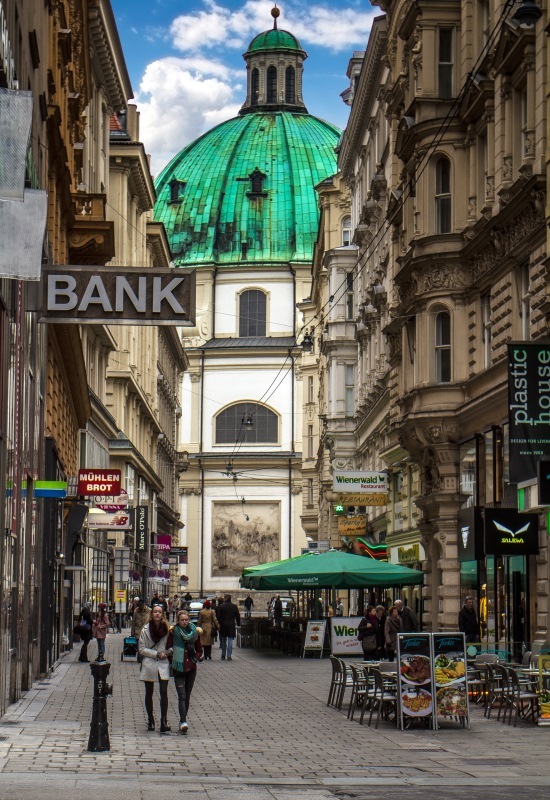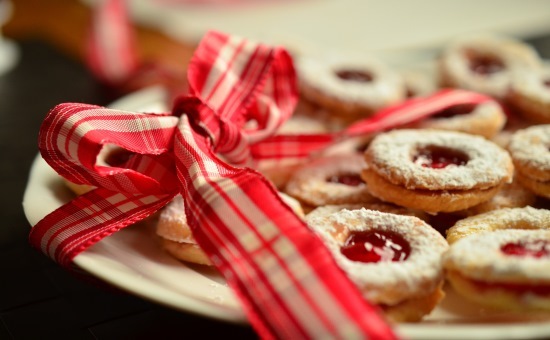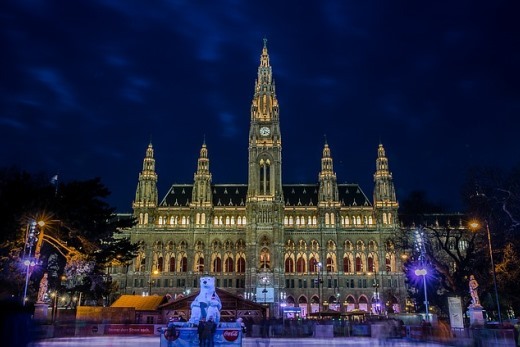Private taxi and minibus transfers from Vienna Airport (VIE)
Easy booking. Punctual and reliable service. Professional, multilingual drivers. Serving passengers since 1998.
Christmas Markets in Vienna
Explore the magical Christmas Markets in Vienna
2024-10-14 | TRAVEL GUIDE
Jump into the hectic Christmas season in Vienna
Vienna, the capital city of Austria, functions on every level whether your interests lie in culture and museums, architecture, fine dining, shopping, a buzzing city break or just chill out time. Vienna is renowned for its Christmas markets in the winter months leading up to the great day, but it is a beautiful city in its own right, with so much to offer. Indulge yourself in a perfect city break and spend your days sightseeing, visiting the Christmas markets after dark when the atmosphere is completely enhanced by the beautiful twinkling lights and the delicious fragrances emanating from all the different food stalls. To start off your holiday in style it is worth to pre-book your transfer from Vienna Airport to city with a reliable taxi company or shuttle service provider.


History strikes you at every turn as the visitor walks around a city that has had a pivotal location in the heart of mainland Europe and was immensely significant prior to the fall of the Ottoman Empire in 1918. With this in mind, a visit to the Imperial Palace of the Habsburgs is essential, as this was the controlling centre of the monarchy prior to the end of the Great War. Still the centre of the democratic Republic of Austria, the Hofburg as the imperial palace is known, offers the most stunning insight into life at the imperial court where the visitor can gain a sense of six hundred years of Austrian sovereign rule. There are a range of apartments consisting of twenty-four rooms which may be viewed, a stunning silver display and the Sisi Museum, which contains collections dedicated to Empress Elisabeth. No visit to Vienna would be complete without a visit to the Hofburg, as it defines the city and the essence of the Viennese people.
The summer residence of the Habsburgs was Schönbrunn Palace, also the location for one of Vienna’s famous Christmas markets. It is Austria’s most popular tourist attraction so expect it to be busy, but the interiors are breathtaking and the grounds beautifully planted and maintained, with fountains and a maze. The view from the top of the hill is breathtaking and well worth the climb. The palace offers different types of tour, some with an audio headset which are shorter and do not include all the rooms but nonetheless informative, and other longer tours with a guide which offer the opportunity to ask questions and interact – you will need to allow around three hours for a guided tour. The palace is easy to reach from a nearby underground station.
For animal lovers, the Vienna Zoo is a must see and this is neatly located in the grounds of the Schönbrunn Palace, built as it was by the Habsburgs as an intended zoological garden. The oldest zoo in the world and founded in 1752, this zoo has consistently been voted Europe’s best zoo and this is simply because of its ability to maximise the visitor experience with the highest standards of animal welfare and preservation. It is a testament to its managers that they are able to combine modern animal enclosures with Baroque architecture. The Vienna Zoo is not huge and is laid out in a circle and so a tour is easily manageable in half a day and can be combined with a visit to the Palace or walks around the gardens, but you can of course, while away many more hours in this beautiful environment.
Animal enthusiasts, particularly equestrian folk, will want to make a beeline for the Spanish Riding School located in the Winter Riding School in the Hofburg. Riding the iconic white Lipizzaner horses, the Spanish Riding School practises the ‘haute ecole’ or high school movements of classical horsemanship which is the founding father of the modern sport of dressage. The horses are bred at Piber, where a stud has been based since 1920, and then trained in the timeless art of classical equitation, some movements of which are used today in modern dressage but others are not, and can only been seen practised by these expert partnerships. Tours of the stables are offered and you can either opt to watch morning exercise or an evening performance in the chandelier-lit Baroque splendour of the riding school.
It would be impossible to mention Vienna without talking about music. Known by many as the ‘city of music’, Vienna has much to offer music buffs, whether it is a visit to Schubert’s birth place and a stroll through the Vienna Woods or listening to the Vienna Boys choir in the magnificent chapel in the Hofburg. The choir is as essentially Viennese as sausage and the Spanish Riding School. The Vienna State Opera, formerly known as the Vienna Court Opera - the name being changed when the rule of the Habsburgs came to an end -, offers performances spanning the centuries in a multitude of languages at the Opera House and there is also a range of outdoor performances throughout the city at different locations throughout the year.
Vienna is also famous of its dance clubs. If you are still not tired of the all-day long sightseeing, make sure to pop in one of the clubs and hang out with locals and tourist. The staff speaks English anywhere you go. austrians learn English from a very early age and this makes communication easy.
The Christmas Markets
Christmas, it is said, starts in September and is totally over-commercialised... well, for a taste of Christmas from days gone by, the real spirit of the festive season, then visiting Vienna during Advent and the Christmas season is a must.
If you are tired of all the gloss and hype that surrounds Christmas and want to enjoy a more genuine and authentic experience, then the Christmas markets in Vienna will really re-kindle your enthusiasm for this special time of year and make Christmas shopping a positive pleasure. Whether you want to return to the magic you experienced as a child or enjoy some romantic time away with a special loved one, Vienna is the definitive location and offers the traditional Christmas experience all wrapped up in a beautiful city.

There are several markets in the city, which begin just prior to Advent, so mid-to-late November. Some prominent and famous, others smaller and more intimate; the bigger markets stay open throughout Christmas and the smaller ones tend to finish just before Christmas Eve.
Probably the largest and the most well known is the Christkindlmarkt which is in front of the City Hall or Rathaus. This year it opens on November 17th and closes after Christmas on December 26th. The market season opens with Spittelberg, which begins on November 16th and finishes just before Christmas on December 23rd. Opening a day later on the 17th November is the Advent market in front of the Karlskirche, a simpler, quieter location, ideal for small children with plenty of attractions for that age range and without the huge crowds that flock to Rathausplatz. The market at the Karlskirche closes just prior to Christmas on December 23rd. The next market to open is another small and low-key market at the Freyung, opening on the 18th November and closing on the 23rd. There is a market in front of the Upper Belvedere Palace, which provides the perfect photo opportunity as day turns to twilight and the astonishing blue sky and palace are reflected in the lake before it, complete with the twinkling lights of the Christmas market - truly a fairytale scene if ever there was one. This market is smaller but offers a range of quality stalls, perhaps a reflection of the impressive art collections contained within the walls of the palace, once home to Prince Eugene of Savoy. Starting on November 24th, the market closes on Boxing Day night; it is easy to access by tram.

Not all the markets are in the centre of Vienna and another market outside the city centre like Spittelberg is the Christmas market at Schönbrunn Palace, which provides a fantastic backdrop for all the different stalls and is possibly one of the most beautiful palaces in Europe. Attracting a high level of seller with many different stalls offering quality artisan wares, some people feel that this is one of the best Christmas markets in Vienna as it avoids the type of trade clearly aimed at tourists. The square forms a natural theatre with the stalls around the side and there are often performances to see in addition to the tempting array of goods for sale and the most delicious selection of food. This market starts on the 18th November and finishes on Boxing Day.
Between the Museum for Art History and the Museum for Natural History, lies Maria Theresien Platz, so called after the monument which dominates the location and which is one of the most iconic references to the might of the imperial Habsburgs. This market opens on November 22nd and closes on New Year’s Eve and is sandwiched between the museums, so a lovely day can be spent imbibing culture before coming out to enjoy an evening wandering through the market which is overlooked by a huge Christmas tree beautifully adorned. This market easily accessible on the hop on hop off bus route.
Each market offers the visitor something slightly different. Most are set in the beautiful squares for which Vienna is renowned, but the market at Spittelberg is located in three narrow streets – Shrankgasse, Sptitelberggasse and Guttenberggasse – and offers something quite unique. The Spittelberg Quarter sits outside the city centre and lacks the tourist traffic of the more popular squares. It is an area full of quaint shops, bijou restaurants and real Viennese leading their lives. It has a quiet charm and authenticity and some visitors rate it as the best Christmas market in Vienna because of this. Well located next to the Museum Quarter, it is possible to combine sightseeing with artisan shopping and dining, perfect for culture vultures and those seeking a more genuine experience.
The central market at Rathausplatz, free for all visitors, is everything you would expect from a Christmas market in Vienna. The square is beautifully decorated with twinkling festive lights and the fairytale architecture gives a Hans Christian Andersen feel to the location even before the market comes to life in mid November. Countless food outlets offer a tempting array of traditional Austrian food and there is plenty on offer for the ardent Christmas shopper plus an ice rink if you really want to do the entire experience justice, a mini one for children and an ice trail through the trees for bigger people. It is the ultimate Christmas bauble and a visit to Vienna would not be complete without some time spent browsing here.
The Vienna Pass
One of the best ways to navigate around Vienna is with a Vienna Pass. This pre-paid card offers free entry to sixty top attractions within the value of the card, and some of the top tourist attractions offer Fast Track entry to Vienna pass holders, so that’s another key benefit to avoid long queues on the day. With the purchase of a Vienna Pass, comes a detailed guidebook to help you navigate the best attractions of the city. The longer the duration of the card, the better value for money it represents and whilst you can only access each visitor attraction once, you can receive unlimited usage on the Hop On Hop Off sightseeing buses. You can also add a travel card option which provides cost effective travel across Vienna’s network of buses, tube and trams.
Hidden Vienna
- Not thought of for its waterways, you can actually access the Danube Canal in Vienna which offers beachside entertainment and a whole cluster of waterside restaurants
- Visit the Jewish Quarter and the market at Karmelitemarkt for a true authentic flavour of Vienna away from the tourist hotspots
- If the art of the imperial palaces has left you fancying a refreshing change, then take a look at Vienna’s controversial street graffiti, some of which is concentrated down near the water; it is a juxtaposition of modern Vienna with its imperial past, situated in the heart of Europe
- The Donauturm is one of the tallest free-standing towers in the world and at 252 metres in height, offers perfect views across the entire city and a unique perspective
- The ring road that surrounds the Inner Stadt district of Vienna (Ringstraße), constructed in the nineteenth century after the removal of the old city walls, offers a great way to see the varied architecture of the city, accessible by bus, tram or just on foot
- The Vienna Woods lie to the west of the city and offer the perfect chance to get away and have a break from the city. Forested land that is part of the foothills of the Northern Limestone Alps, the Vienna Woods has long been a rural playground for the Viennese. Accessible by bus and tram, the woods offer great views back to the city and there are underground boat rides, as well as riverside and woodland walks
To save time and get the most out your days in Vienna, it is adviced to book a city center hotel to have all the famous spots and the most beautiful Christmas markets in walking-distance. Your pre-booked Vienna Schwechat Airport taxi will take you straight to your hotel and pick you up there when the time comes to leave this iconic city.
Are you a local business owner and want to be listed on wientransfer.com? Get in touch!